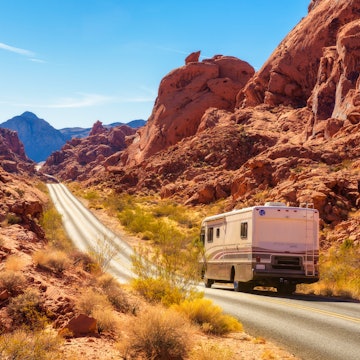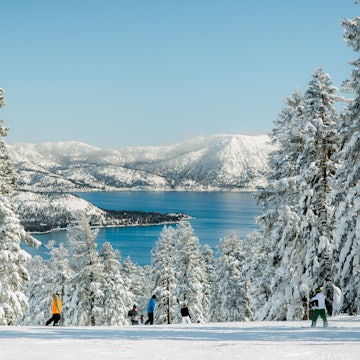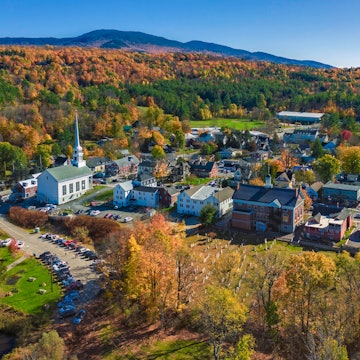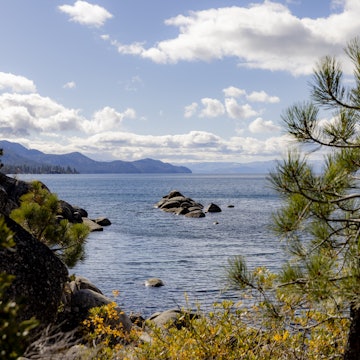
Gems, caves and stars: Nevada’s most glittering experiences
Sponsored by

Mar 16, 2022 • 5 min read

Nevada is home to geological marvels and some of the darkest skies in the entire country © Bailey Freeman / Lonely Planet
One of the biggest misconceptions about Nevada is that it’s a dusty place devoid of any sparkle, but the Silver State is full of shine if you know where to look. Nevada’s glittering experiences are subterranean and celestial. Here’s our guide to the state’s shimmering treasures.

Dig into rockhounding
Geologically speaking, Nevada is a marvel. It’s the third most seismically active state in the country (behind Alaska and California), and it owes its geological diversity to a series of processes spanning millions of years: the formation of an ancient seabed, the movement of tectonic plates along fault lines, volcanic intrusions, glaciers and more.
The result? A wealth of minerals and ore tucked away beneath its mountains and basins. While silver and gold may be the most valuable (and famous), the Silver State’s earth harbors plenty of other goodies accessible to today’s rockhounds and crystal lovers – quartz, chalcedony, black fire opal, serpentine, jasper, and garnet, just to name a few. Check out some of our favorite sites:
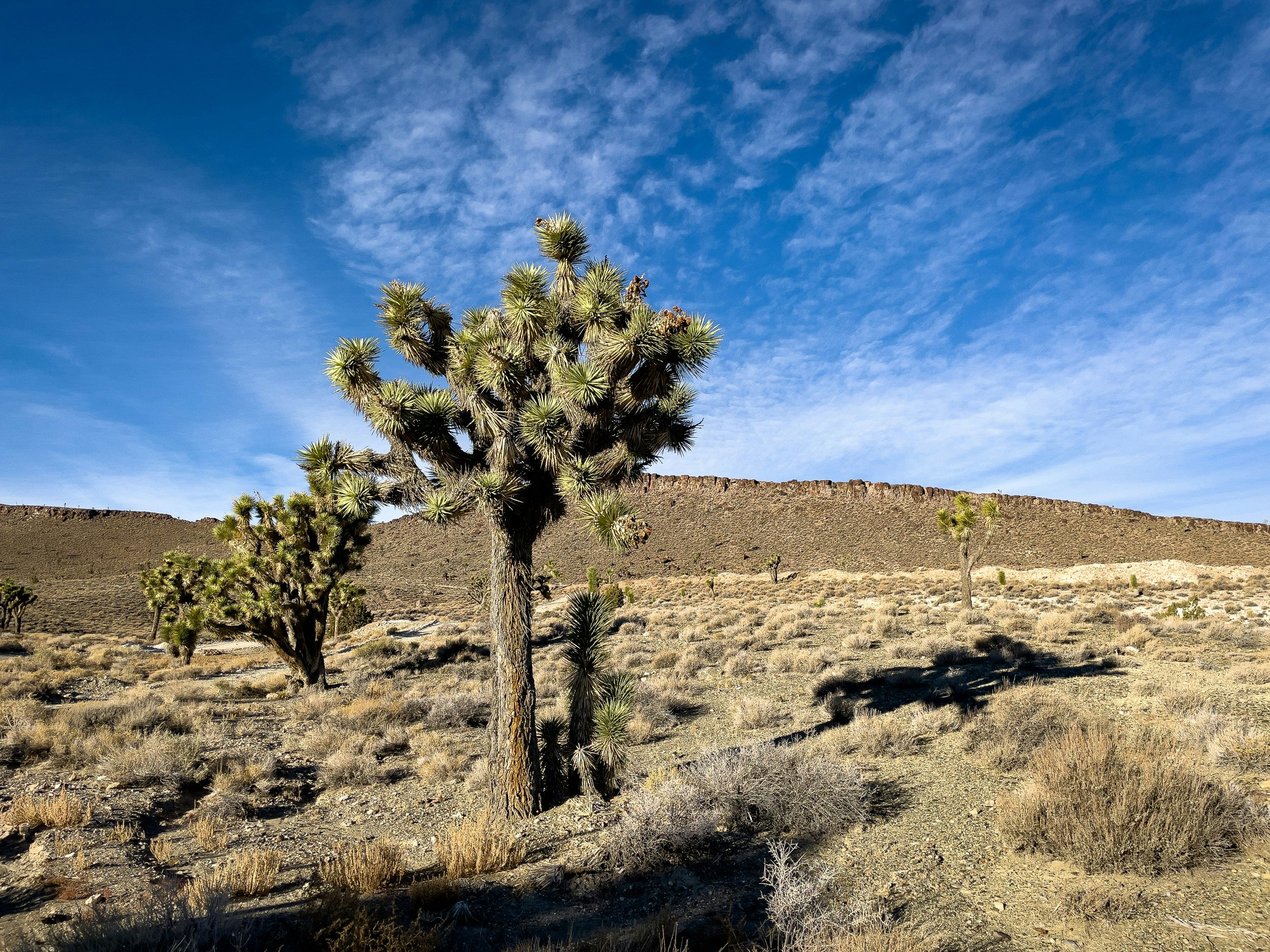
Gemfield
Located five miles outside of historic Goldfield, Gemfield’s treasures require minimal searching – simply look down. This privately owned rockhounding haven features dig sites for a rainbow of unique stones. Gemstone-quality chalcedony features Saturn-esque rings of vermillion, orange and white, while serpentine displays intoxicating shades of green streaked with shimmer. Gently comb through the bounty to find your favorites, and make sure to leave $1 per pound in the payment box at the entrance. Only hand tools are permitted (though you’ll barely need them!).

Otteson Brothers Turquoise
Hidden deep in the Nevada hills about an hour outside of Tonopah is the Otteson Brothers Turquoise Mine, where the bright blue-green stone seems to jump out of the bedrock. This family-owned rockhounding site invites visitors to come search for a little piece of Nevada geological history. The mine yields several varieties of turquoise in a range of colors and textures, so diggers will be spoiled by the number of choices. But be warned: turquoise requires a bit of effort to extract, so bring good tools – like a rock hammer, bucket and gloves – and ask the Ottesons for their technique tips. Half-day tours run $150 per person (or $250 per couple) and the price covers the stones you take home with you. Kids dig for free!

Garnet Hill
When prospectors found garnet in Nevada in the 1870s, they were quick to claim the red gemstones were rubies. They weren’t, but the glittering finds made their way into the state’s history anyway. The garnets of Garnet Hill (located just 20 minutes outside of Ely) were formed by an ancient volcano, cooling within hunks of rhyolite and later becoming one of the region’s most fashionable stones. Today, this free dig site yields a spectacular number of gems that are perfect for jewelry making – or simply showing off to friends.
Hunting for garnets requires a keen eye and a little bit of patience, but not too much muscle; these round stones are sometimes found within other rocks, but they are often scattered on the ground by themselves, little glimmers of deep red peeking out of the dirt. If you’re headed to Garnet Hill, try to time your visit after a rain – the running water washes away fine sediment, leaving garnets exposed in the gullies.
Rockhounding responsibly
There are a few house rules when it comes to Nevada rockhounding. It should only be done in designated sites – not in protected lands or on private property. You cannot rockhound in state or national parks, and if you’re on BLM (Bureau of Land Management) land, check to see if rockhounding there requires a permit.
When you dig, be mindful of your physical impact on the space. While it’s tempting to go wild after your first finds, rockhound in moderation. Other visitors will thank you. Finally, if you find any Indigenous artifacts, leave them undisturbed – it’s illegal (not to mention culturally insensitive) to take them.

Eyes to the skies
Ready to switch up the view? Nevada is home to some of the darkest skies in the entire country. Not only are they amazing to look at, but they are also extremely important to wildlife, as dark skies reflect the true environment for nocturnal animals. The following two areas offer spectacular stargazing that reveals corners of the cosmos you’ve only dreamed of:
Great Basin National Park
The motto of Great Basin National Park is “Half the park is after dark,” and for good reason. Due to its remote location, low humidity, and high altitude, it’s an ideal place to turn your gaze skyward for unrivaled views of the Milky Way, the Andromeda Galaxy and the Triangulum Galaxy. The park features great spots for stargazing solo (Mather’s Overlook and the Great Basin Astronomy Amphitheater are two good bets), and hosts a robust astronomy program from Memorial to Labor Day.
Die-hard star enthusiasts, mark your calendars – the Great Basin Astronomy Festival takes place every September. Astronomers set up telescopes for use by the public, guest speakers give talks about technology and celestial phenomena, and attendees can take astrophotography workshops, tour the Great Basin Observatory, or participate in family-oriented astronomy events.

And we know we’re talking about skies, but we simply must note that Great Basin is also home to Lehman Caves, spectacular limestone tunnels featuring more than 500 rare cave shields – unique round formations dripping with stalactites. Weird fact: old-time spelunkers used to scrape microscopic crystals from the cave ceiling and mix them with water to create “moon milk” that they would drink in hopes of improving their health. (Spoiler alert: it didn’t.) The caves will be celebrating their centennial anniversary as a national monument in 2022 and the national park will be hosting special events all year – be sure to stop by to experience this underground wonder.

Basin and Range National Monument
Just a few hours down the road from Great Basin National Park sits Basin and Range National Monument, 704,000 acres of remote protected desert and the perfect stargazing locale for those who prefer absolute solitude. With just 40 cars visiting per year on average, this newly christened national monument (added to the BLM in 2015) is devoid of light pollution and human interruption. Visitors can hike and camp anywhere in the monument, so find a cozy place to set up your tent and sit back and enjoy Mother Nature’s light show.
Sponsored by Travel Nevada
As a travel entertainment and inspirational media outlet, we sometimes incorporate brand sponsors into our efforts. This activity is clearly labeled across our platforms.
This story was crafted collaboratively between Travel Nevada and Lonely Planet. Both parties provided research and curated content to produce this story. We disclose when information isn’t ours.
With sponsored content, both Lonely Planet and our brand partners have specific responsibilities:
-
Brand partner
Determines the concept, provides briefing, research material, and may provide feedback.
-
Lonely Planet
We provide expertise, firsthand insights, and verify with third-party sources when needed.









